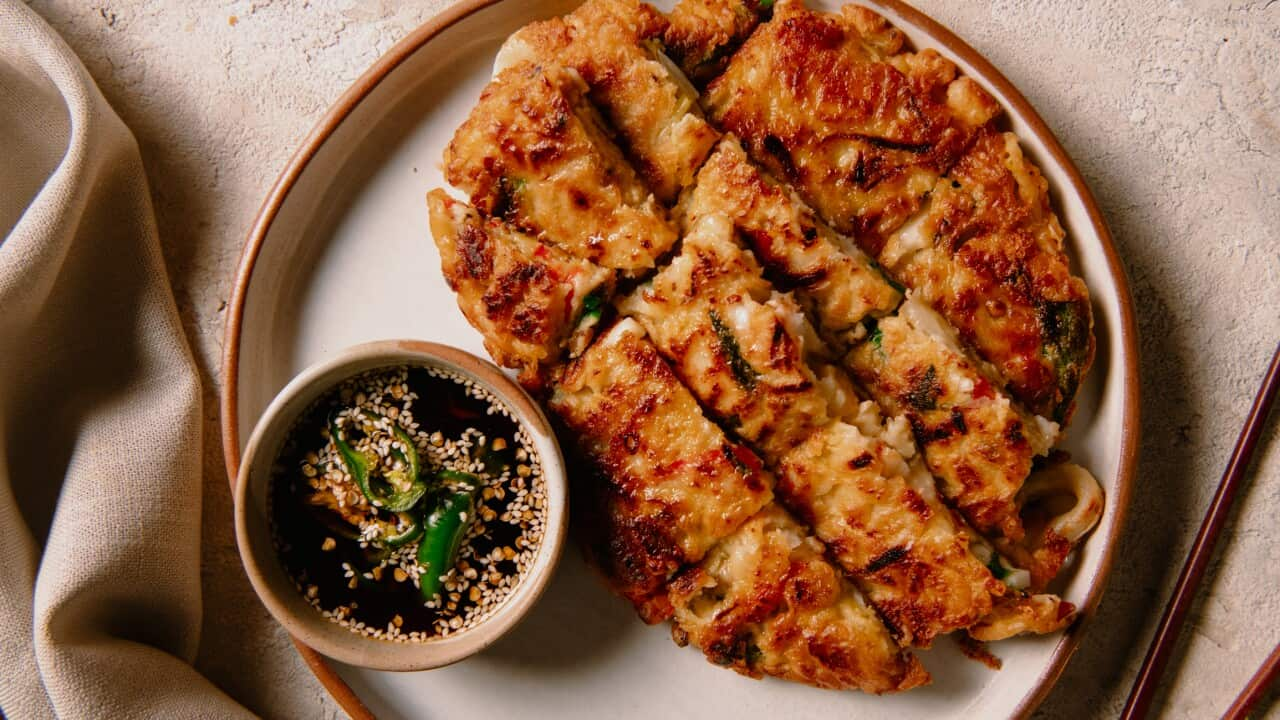--- Watch weeknights on SBS Food (Ch.33) at 7.00pm. Stream all episodes anytime at ---
Stream free On Demand

The Long or the Short of It: Noodles or Rice
episode • The Cook Up with Adam Liaw • cooking • 25m
G
episode • The Cook Up with Adam Liaw • cooking • 25m
G
Home may be where your heart is. But for Jae Bang — a who was born in Korea and lived in New Zealand, America, Spain and Norway — it's also wherever his Korean barbecue is.
“The food memories of my childhood are Korean,” says Bang, executive chef at and guest on the SBS show, “There’s no doubt about that. We ate a lot of lot of Korean barbecue growing up – every household in Korea did.”
Traditional Korean barbecue uses a fireplace with charcoal to grill a range of meats. These are served with a variety of side dishes, like kimchi and cucumber salad, to create a full meal.
Bang, a Nordic-Australian fusion chef, recalls how a casual Korean barbecue used to feed his family once a week.
“We used to put paper on the floor or down on the table so that the oil from the barbecue wouldn’t splash everywhere and make a mess,” Bang tells SBS. “Then we’d get out a small cast iron burner and a lot of Korean side dishes that were already in our fridge. All we would need to do was go to the butcher to get some meat, like pork belly. It was so easy to do. Korean barbecue was our regular meal.”
These days, Bang makes Korean barbecue for his family of four at his Melbourne-based home once a month (give or take). “We do it quickly and often, preparing the table and chairs outside with the kids. They really like it."
Bang says part of the appeal of a Korean barbecue is that you get to choose the type of meat you want to eat. “If someone wants pork, we get pork. If someone else wants beef, we also get beef. It’s an extremely flexible way to cook and eat.
“The other beautiful thing about Korean barbecue is that it creates a sense of gathering.”
The social aspect of the humble Korean barbecue has contributed to its popularity throughout Australia.
“When you eat Korean BBQ, you need to cook the raw meat that’s in front of you and interact with each family member at the table. It’s very good bonding time.”
Although the culinary practice of barbecuing is a traditional feature of Korean culture, Bang insists that he doesn’t cook it to adhere to tradition. “We do it because it’s special."
In addition to Korean barbecues, Bang cooks food from a diverse range of cuisines at home. As he tells SBS, his eating habits as an adult are quite multicultural. He fuses his childhood love of Korean barbecue with a passion for Italian, Japanese, Nordic, French, American and Spanish cuisines when cooking for his family.
“For us, there are no boundaries in terms of what cuisine we eat,” says Bang, who currently runs a modern Australian restaurant with Nordic influences. “It's extremely diverse. I think our children must be exposed to many different cultures and cuisines.”
For us, there are no boundaries in terms of what cuisine we eat.
Bang tells SBS he often makes his kids Nordic waffles topped with crème fresh and smoked trout. They eat a lot of Italian and Chinese food. When the opportunity presents itself, he’ll also make them a warm bowl of Nordic porridge cooked in milk with a touch of sugar, a small piece of butter and some cinnamon powder.
“What we eat is who we are. Both my kids have now lived in four different countries already. So if we feel like pasta, we will eat pasta. If we feel like broth or short ribs then we will eat that.
“Food traditions are amazing. But if you get the chance, try to get out of your comfort zone with your cooking, there are so many different kinds of foods that are yet to be discovered. The dish that you haven’t yet tried may just be the dish that will change your life.”









